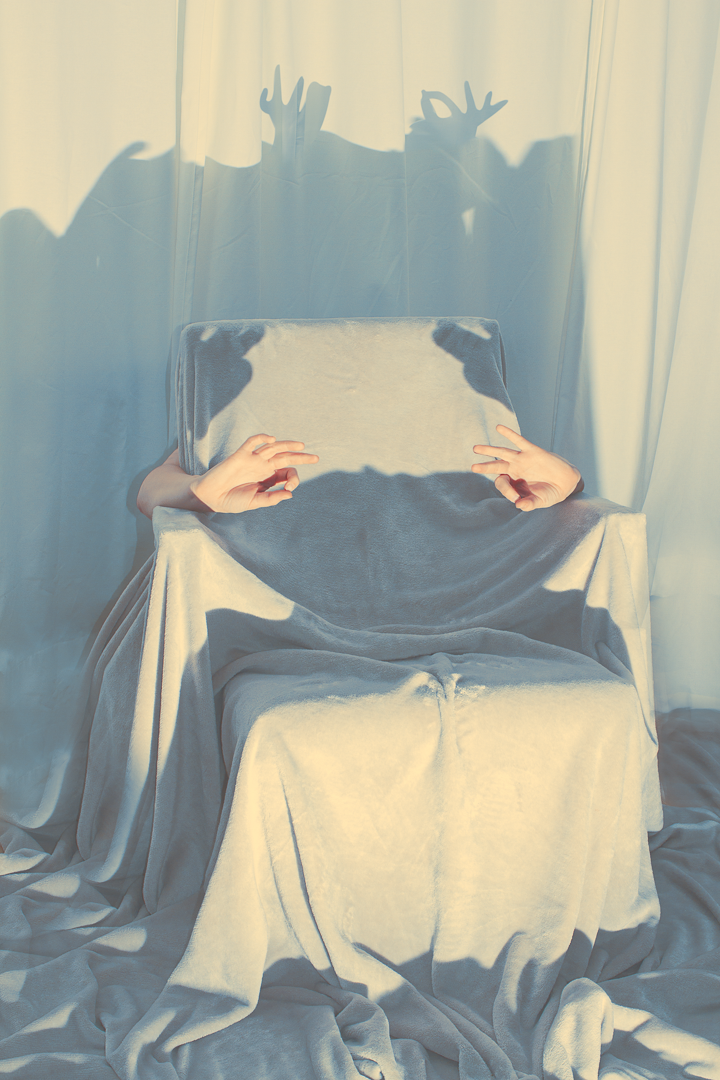
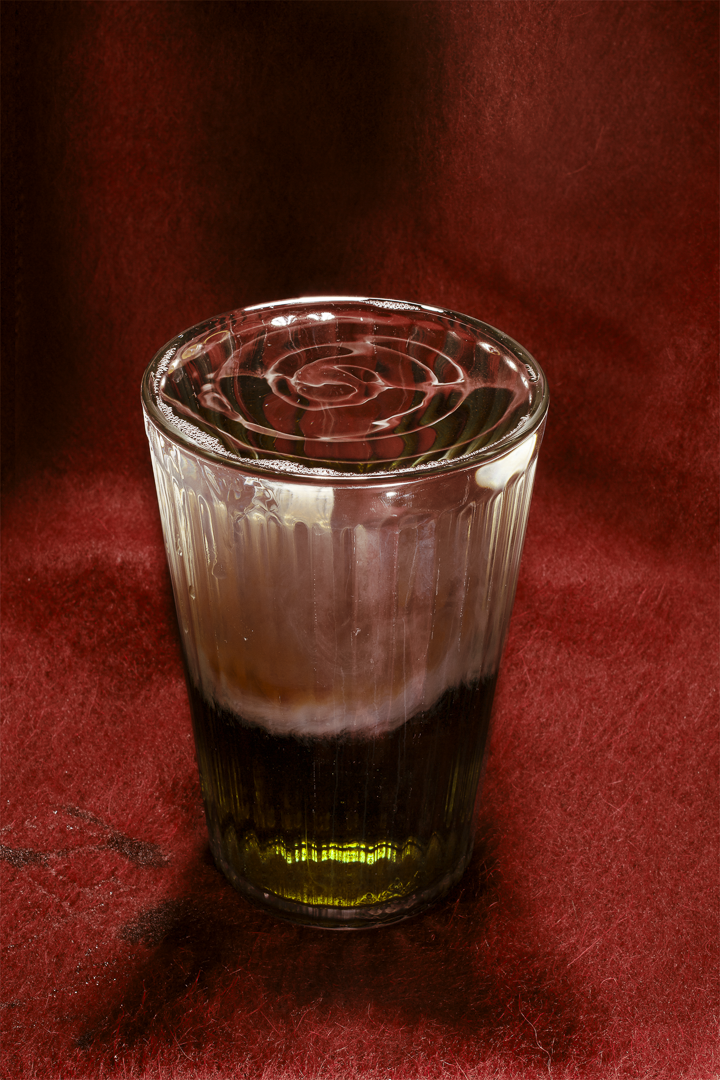
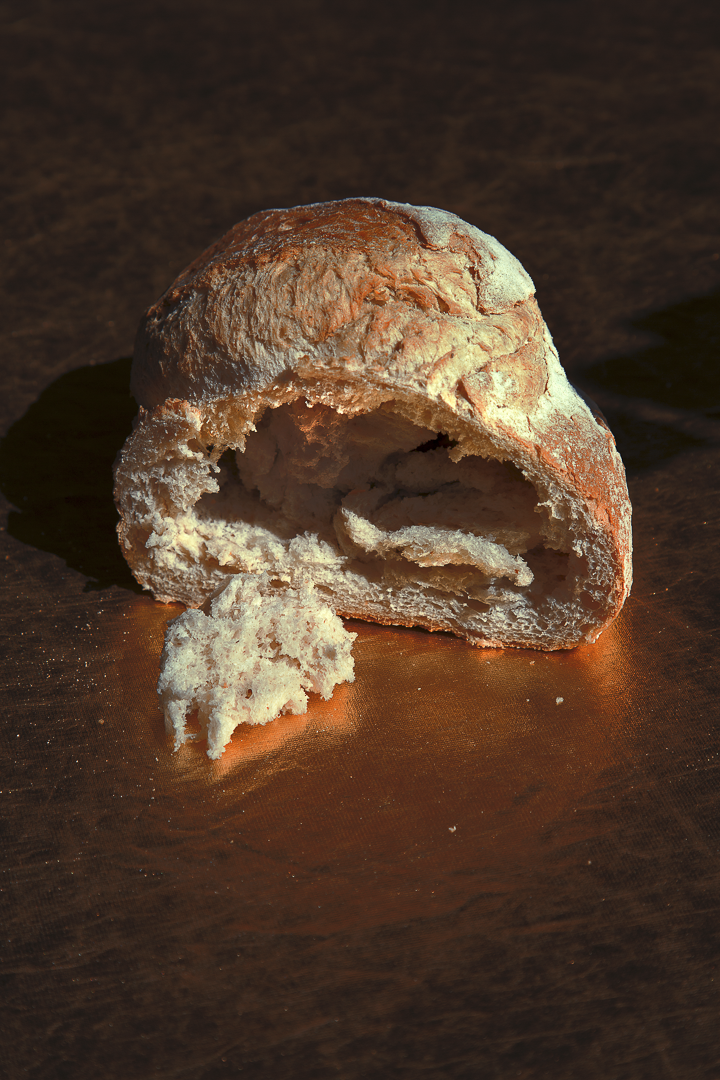
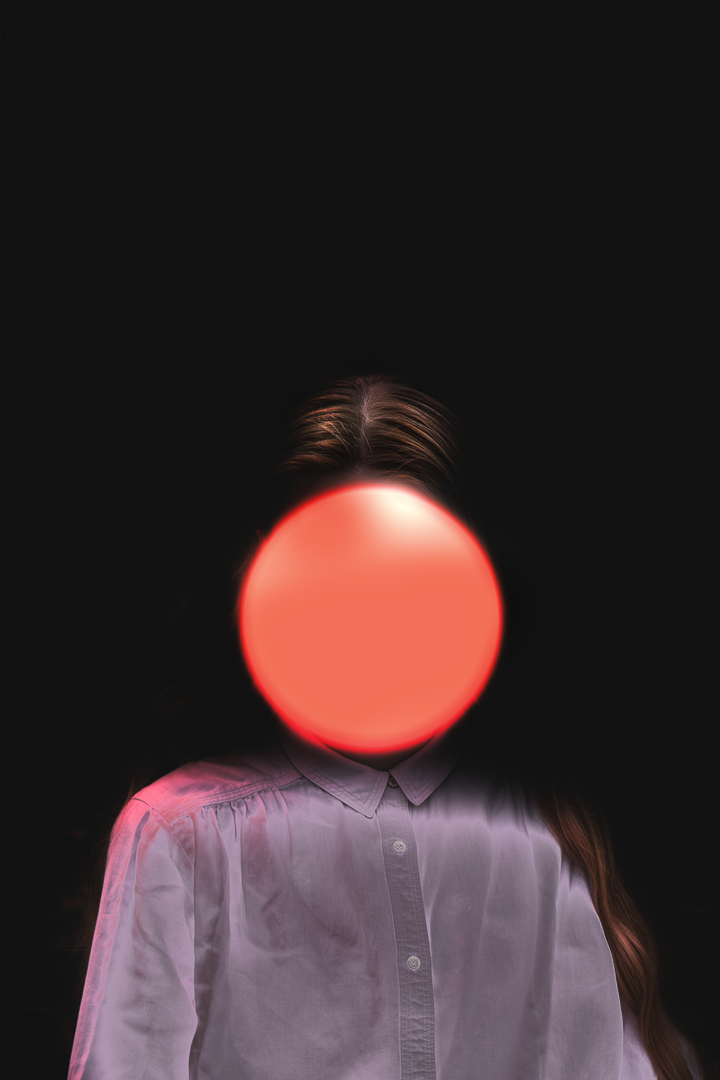


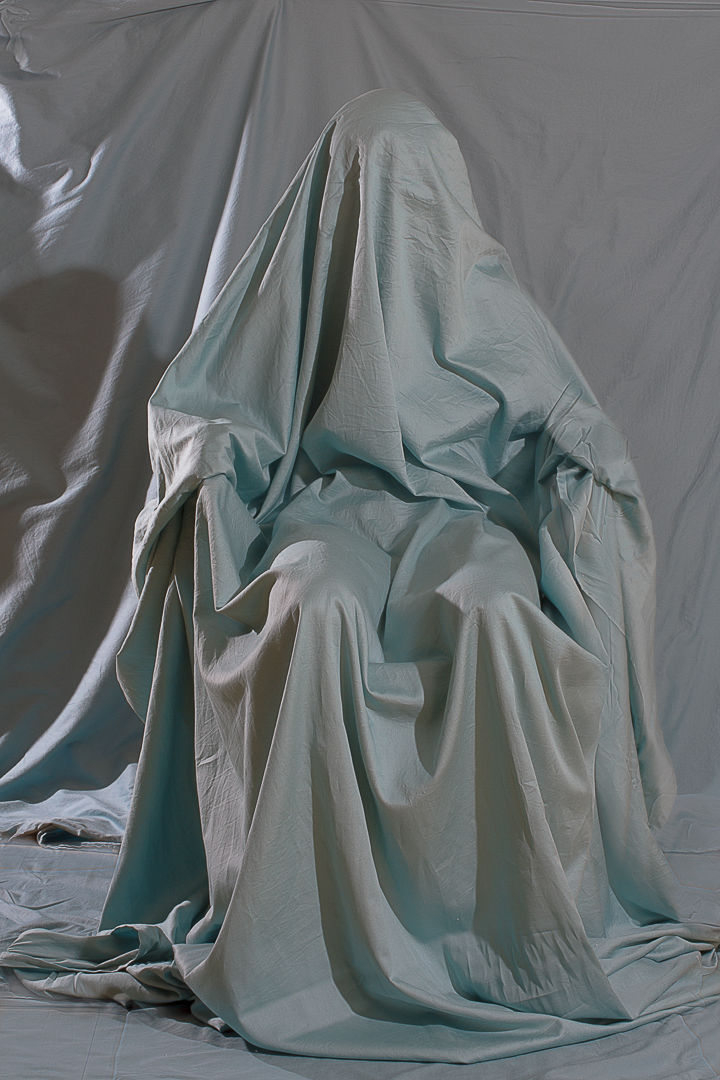
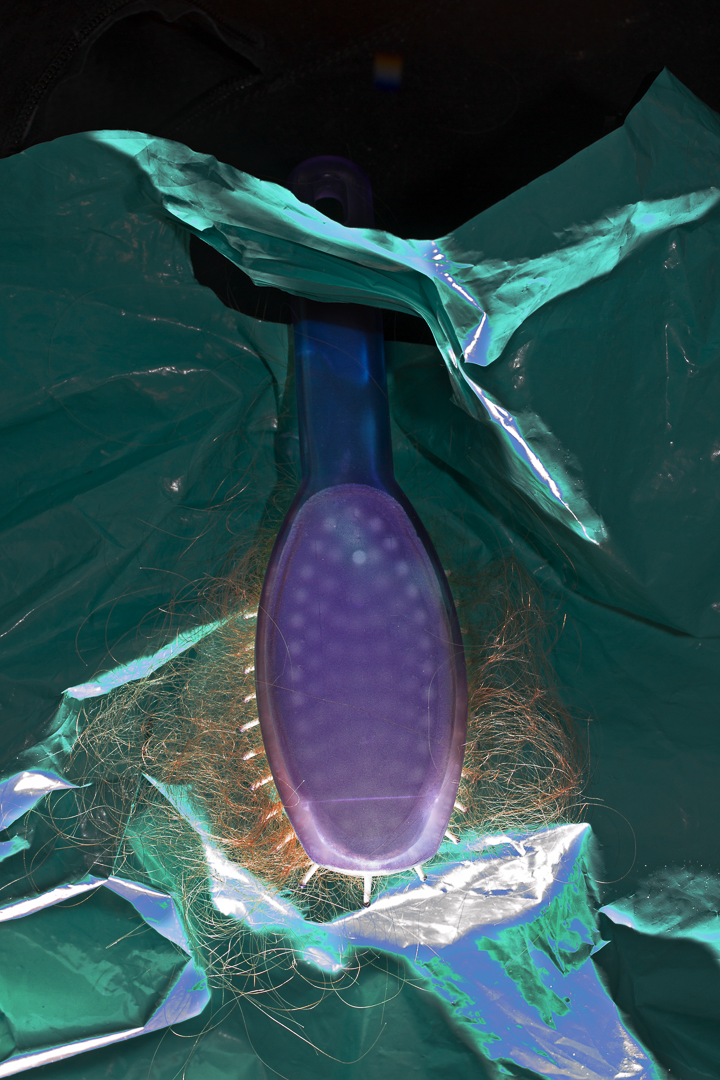
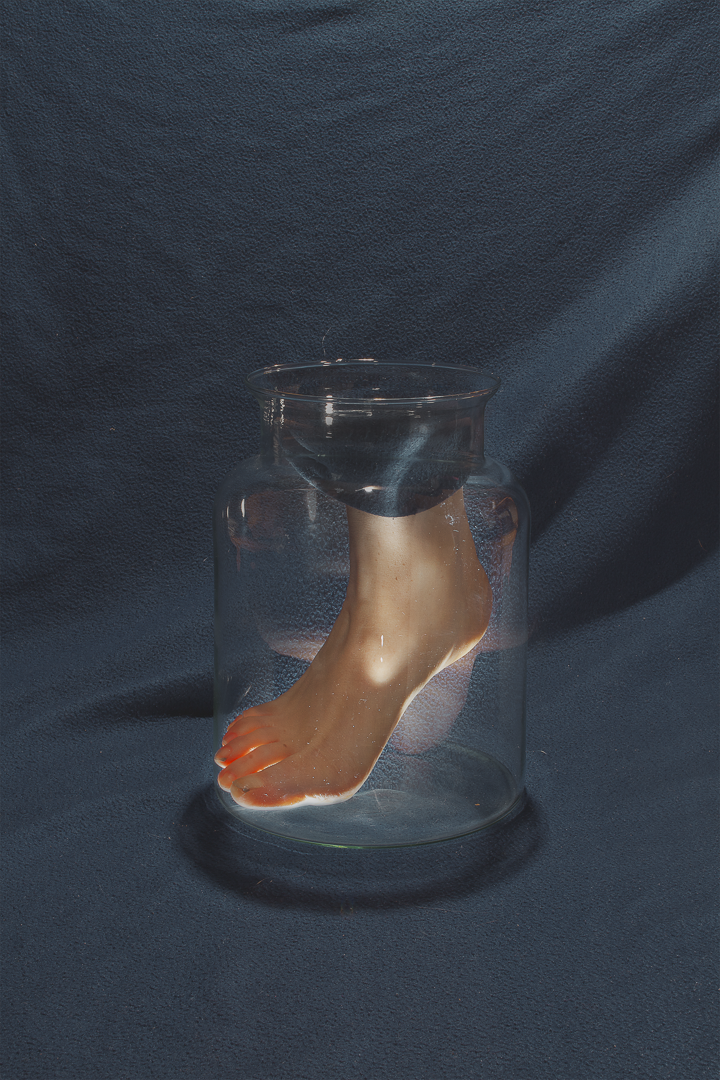
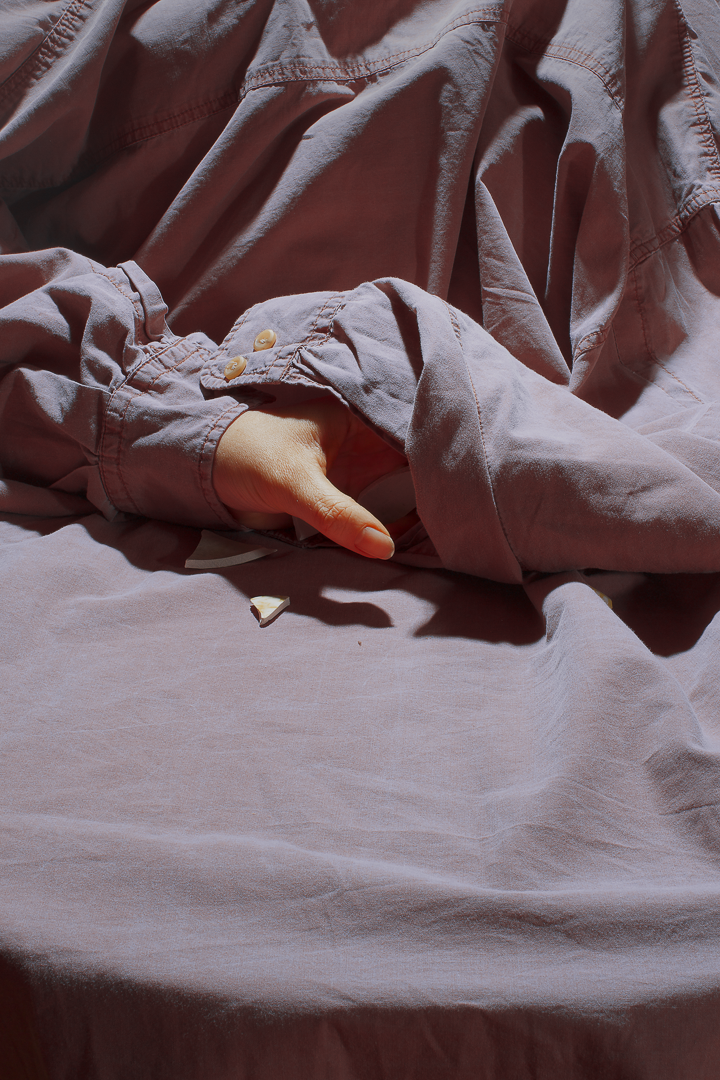

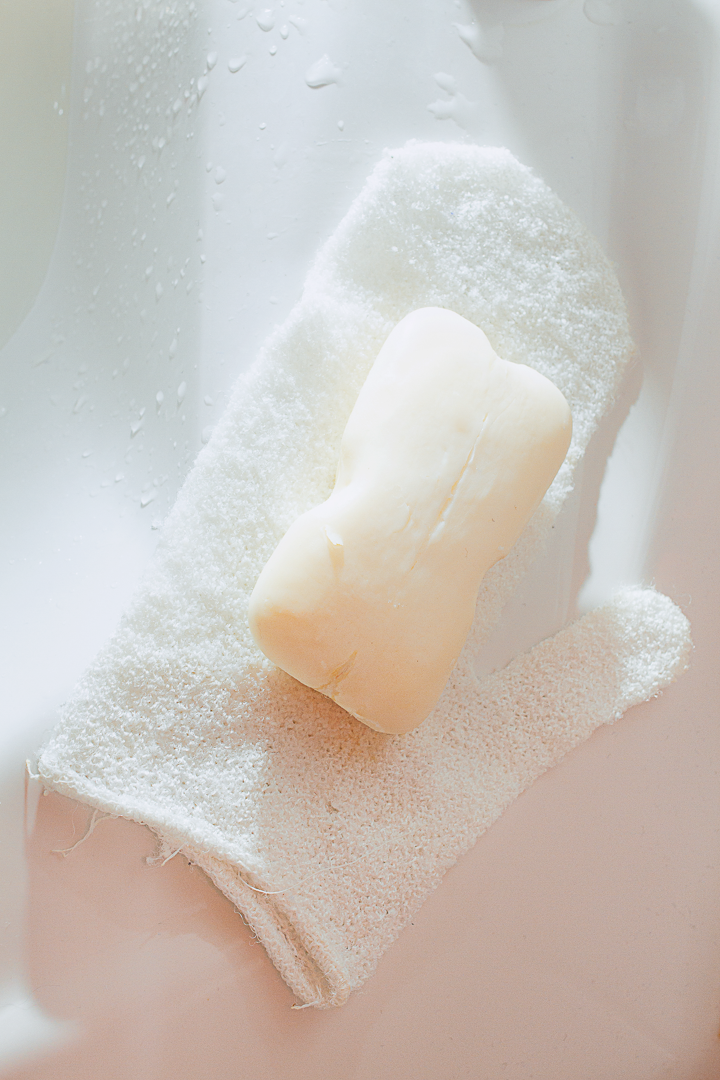
INTERVIEW - JOSJE VAN STEKELENBURG
Turning uncertainty and doubt into visual poetry is what fiction-based artist Josje van Stekelenburg (b. 1991, The Netherlands) does best. Her photographs play with cryptic yet open-ended symbolism, drawing on a wide range of historical and philosophical sources — from an investigation into the psychological mechanisms behind mass hysteria, such as with the dancing manias of the Middle Ages, to the philosophical ideas behind artistic drive — to create imagary that explores the liminal space between visual expectation and reality. Cinematic devices drawn from the genres of horror and the psychological thriller pervade in her work, manifesting in expressive images that examine the human propensity to "push random information into chronological order". Van Stekelenburg recently spoke to GUP New about the inspiration and working process behind her project Apotheosis / Apophenia*.
Your photographs in this series all seem to follow a very simple, pure composition, often containing only one or two objects/subjects — and always focus upon small, almost cryptic details rather than exposition, or some easily decipherable narrative. Was this a conscious decision in your process?
Yes, it was conscious -- I think in details, and I like to zoom into things.So that's why texture is so important — I look for these things, and I see stories in the small details; I like that better than what you typically see when you're zooming out, it feels boring to me. Especially with this series, keeping in mind that Apophenia is about leaving gaps, if you have details, then it's easier for people to put things together in their own way. I didn't want to say "This is the beginning, and this is the middle, and this happens." I wanted to be expressive.
I also noticed that although human subjects technically appear in several of the photographs, their identity is always concealed — even the bodies are never in full view. Almost as if you want to maintain a sense of pure anonymity so that the viewer can project their own ideas — just like with the idea of Apotheosis. Why is it that you never depict faces?
I think it's boring. I've tried it so many times, and I really admire people who can take gorgeous portraits, but I can't do it, process-wise. Because you give so much information already — I want people to be able to look at it and think, "Oh, this could be me, or the enemy, or the protagonist", or even see it as a figure or character from a story. I like that idea of playing with what this character means, or is, or whether it's even a character. And I like in this sense, with Apotheosis, that there are so many ways you can look at it, and there's mystique. Things we can't grasp. It keeps you busy, which is important to me.
In terms of the objects you choose to portray, there seems to be an underlying thread connecting them that isn't about narrative, but rather this feeling of the "abject". They're all photographed in a way as to seem almost eerie — perhaps it's the cinematic lighting, as well. Can you elaborate on the thought process behind your choice of subject?
I like using things that aren't necessarily beautiful — things that people don't want, and putting something on it that makes it "pretty" again, but still has this double layer. If you look at it in one way it can be horrible, and in the other, it's beautiful. It also makes me feel kind of powerful to make people look at things they wouldn't normally look at — It's like a horror movie, you don't want to look, yet you want to know what happens, and follow through until the end. That's something I really like about photography.
Because your photographs often focus on details, there seems to also be an emphasis on making texture and tactility feel visceral, like you mentioned previously. Was this intentional?
For me texture always stands out, and I'm always drawn to it. And what I've said before about the influence of Mary Shelley’s Frankenstein — for me that is also a big part of it because I've read it a few times and the first time I read it, it was really about the body, and I really thought about how he connected and how he sewed that body together, and how it would feel, how his eyes would look; it's always about touch. I felt the need to put these different textures together and form it as a "body". I find so much meaning in that book, further than just that — but in my work I go in another direction. It's never about the objects, no. It's never about the glass, or the table...
The fascination with Frankenstein and his monster was, you say, about the body at first — but that changed. Can you explain further?
It was about the body first; I had a lot of issues with my body at the time so it was logical that I would connect with that — but then after I started to get almost jealous of Victor, the maker of the creature. He's so certain he can make the creature, and that he can defy God to create this grand, prestigious thing that's better than a creature God could ever create. Then it's in the world, he puts it out there, and it's hideous and he hates it, so he runs away, leaving this creature on its own. And so I saw this amazing connection with the maker and art — I think at the one hand I was jealous of the certainty of Victor when making this grand thing, and the doubt comes afterwards... whilst for me, the doubt is always there beforehand. I just think the story has so many layers, and thinking of this creature as your art, was really helpful to me. I think it's a strong symbol for my work, especially because it started with that texture, with the skin and every little roughness of it, and all the layers and all the wrinkles...
Do you think this exploration of using uncertainty and doubt as a genesis for artistic creation is something you will continue with in the future?
I think that's the core of my work. I'm never going to make work that defines anything, because I am constantly questioning things. and that's why I photograph. I start taking photographs when I can't wrap my head around something — when I don't understand. I think my work is always a big Rorschach test — it's always about wondering whether this photo is about something you don't see, or how you make a story out of it, or how other people make a story from it. It can be so many things, and it's going to be something different every time, and there are always small things that reappear or change each time. That questioning, and the not knowing, turned into something holy, in a way. Because that's symbolism for life. Confusion is the core!
* Apotheosis
d. the elevation or exaltation of a person to the rank of a god; the ideal example; epitome; quintessence.
* Apophenia:
d. the tendency to perceive meaningful connections between unrelated things; or, to imply a human propensity to seek patterns in random information.
